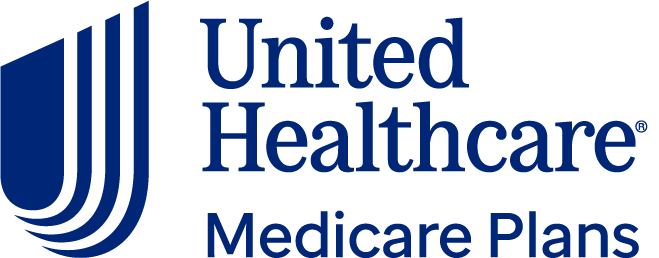What Are the Parts of Medicare? Parts A, B, C and D Explained
Medicare has four parts with letter names. You can choose between them to decide how you receive your benefits.

Many, or all, of the products featured on this page are from our advertising partners who compensate us when you take certain actions on our website or click to take an action on their website. However, this does not influence our evaluations. Our opinions are our own. Here is a list of our partners and here's how we make money.
Medicare is the federal health insurance program for people age 65 and up and people with certain disabilities. The four parts of Medicare are:
Part A: Hospital insurance.
Part B: Medical insurance.
Part C: Medicare Advantage.
Part D: Prescription drug coverage.
Here’s what you need to know about the Medicare parts and how they work.
What are the Medicare parts and how do they work?
Part A

Part B

Part C

Part D

Medicare Parts A and B combined make up Original Medicare
Original Medicare is the traditional Medicare program offered by the federal government. It includes Medicare Part A and Medicare Part B. With Original Medicare, you can see any health care provider in the country that accepts Medicare, and you usually don’t need a referral to see a specialist. If you want prescription drug coverage, you have to buy a separate Part D plan.
Medicare Part C is an alternative to Original Medicare
You can’t have both at the same time. Medicare Advantage covers all the same benefits as Original Medicare. The plans often come with extras like prescription drug coverage and dental, hearing and vision benefits. With Medicare Advantage, you’re often limited to providers within your plan’s network if you want the most affordable care. You may also need a referral to see specialists.
Medicare Part D can be added to Original Medicare
If you have Original Medicare, you have the option to buy a Medicare Part D plan if you want prescription drug coverage. Most Medicare Advantage plans come with prescription drug coverage included. You can’t buy a stand-alone Medicare Part D plan if you have Medicare Advantage.
Medicare Part A: Hospital insurance
What does Medicare Part A cover?
Medicare Part A covers stays at hospitals and skilled nursing facilities, hospice care and certain related health care services. However, it doesn’t cover long-term care services or custodial care in assisted living facilities or nursing homes.
What does Medicare Part A cost?
Most people get Medicare Part A for free. However, people who don’t qualify for premium-free Part A can sometimes buy in at a cost of $518 per month in 2025 ($565 in 2026).
Medicare Part A has a deductible of $1,676 in 2025 ($1,736 in 2026). Most inpatient services don’t have copays to start, but they apply after a certain period. For example, after the 60th day of an inpatient hospital stay, copays start at $419 per day in 2025 ($434 in 2026) and go up after day 90.
There’s no annual limit on Medicare Part A's out-of-pocket costs, but you can limit these costs by buying a separate Medicare Supplement Insurance plan, or Medigap.
Shopping for Medicare plans? We have you covered.

4.1
CMS Star Rating
from UnitedHealthcare

4.19
CMS Star Rating
Medicare Part B: Outpatient medical insurance
What does Medicare Part B cover?
Medicare Part B covers two kinds of services: medically necessary outpatient health care and preventive services.
Here are a few examples of outpatient health care covered by Medicare Part B:
Visits to a health care provider at an office or clinic.
Certain inpatient services like stitches or X-rays.
Medically necessary ambulance services.
Durable medical equipment like CPAP machines, lift chair mechanisms and wheelchairs.
Preventive services covered by Medicare Part B include things such as screenings, tests, vaccines and counseling.
What does Medicare Part B cost?
Medicare Part B has a premium, a deductible and coinsurance requirements:
Premiums: Most people pay the standard premium: $185 per month in 2025 ($202.90 in 2026). Beneficiaries with very high incomes pay the income-related monthly adjustment amount (IRMAA).
Deductible: The deductible is $257 in 2025 ($283 in 2026).
Cost sharing: Outpatient services have a 20% coinsurance, but there’s no coinsurance or copay for most preventive care.
There’s no annual cap on your out-of-pocket costs. (You can limit these costs by buying Medigap separately.)
Medicare Part C: Medicare Advantage
What does Medicare Part C (Medicare Advantage) cover?
While benefits vary from plan to plan, all Medicare Advantage plans must cover at least the same benefits as Medicare Part A and Medicare Part B, but most cover more. Medicare Advantage plans usually include prescription drug coverage and many offer additional dental, hearing and vision care benefits.
What does Medicare Part C (Medicare Advantage) cost?
If you buy a Medicare Advantage plan, you’re still responsible for the Medicare Part B premium: $185 per month in 2025 ($202.90 in 2026).
Premiums: The average Medicare Advantage premium is $16.40 per month in 2025 ($14 in 2026), according to KFF, a health policy nonprofit. Premiums range from $0 to well over $100 per month.
Deductible: Deductibles vary by plan.
Cost sharing: Copays and coinsurance vary by plan.
Medicare Advantage plans have a maximum out-of-pocket amount, after which you don’t pay any more out-of-pocket costs for the year. For in-network services, the out-of-pocket limit can’t be higher than $9,350 in 2025 ($9,250 in 2026) (there’s a higher limit for in- and out-of-network services combined). The out-of-pocket limit doesn’t apply to prescription drugs.
Medicare Part D: Prescription drug coverage
Medicare Part D plans are sold by private health insurance companies to cover prescription drugs. There are two different ways to get Medicare prescription drug coverage:
If you have Medicare Part A and/or Part B, you can buy a stand-alone Part D plan.
If you have Medicare Advantage, it probably includes prescription drug coverage. In most cases, Medicare Advantage members can’t join a separate Medicare Part D plan.
What does Medicare Part D cover?
Every Medicare Part D plan and Medicare Advantage plan with prescription drug coverage has a formulary, or its list of covered drugs. You need to check the formulary to see whether and how a plan covers your medications.
Most formularies are organized into tiers, and each tier has different cost-sharing requirements. Drugs on lower tiers have low or even zero cost-sharing requirements, while drugs on higher tiers can cost much more out of pocket.
What does Medicare Part D cost?
Medicare Part D plans can have premiums, deductibles, copays and/or coinsurance.
Premiums: The average total monthly premium for Medicare Part D coverage is $38 in 2025 ($34.50 in 2026). Medicare Advantage plans don’t charge separately for prescription drug coverage — you pay one premium for the whole plan.
Deductible: Most plans have a deductible for some or all of their covered drugs. By law, the deductible can’t be higher than $590 in 2025 ($615 in 2026).
Cost sharing: Each plan’s formulary describes the copays and/or coinsurance for drugs on each tier.
Maximum out-of-pocket cost: Part D comes with a cap on out-of-pocket costs. It's $2,000 in 2025 ($2,100 in 2026).
» If you have concerns about affording Medicare Part D, look into Medicare Extra Help.
Medicare Supplement Insurance (Medigap)
Medicare Supplement Insurance, or Medigap, covers out-of-pocket costs for beneficiaries with Medicare Part A and Part B. Medigap isn’t a letter-named “Part” of Medicare. Still, it’s additional insurance that’s worth considering if you have Original Medicare.
Medigap policies only cover costs associated with Medicare Part A and/or Part B. They don’t work with Medicare Advantage plans.
What does Medigap cover?
Medigap policies are sold by private insurance companies to cover certain coinsurance, copays and deductibles left over after Medicare Part A or Part B has paid its share of the bill. There are 10 standardized Medigap plans with different levels of coverage.
What does Medigap cost?
All Medigap policies have monthly premiums, which can be as low as $30 to $40 but can also get up to hundreds of dollars per month. Premiums for Medigap policies vary according to the plan type, health insurance company, and factors that can include your age, sex, location, tobacco use and health information.
A few plan types have copays, coinsurance or deductibles, but most Medigap plan types don’t.
Table of Contents






